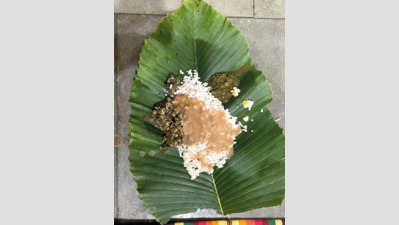ARTICLE AD BOX

Keri: The fourth lunar month, Ashadh, is not only the season of downpours but also the period of outpouring of lushness, with the sprouting of emerald leaves that bedeck Goa’s religious and cultural tapestry.Every year, the full moon day of Ashadh is celebrated as Ashadhi Punav by the tribal Velip community in the forested areas of Goa. The new leaves of Dillenia pentagyna (karmal) tree are used as bowls to serve offerings of a sweet dish to the folk deity. The dish is made with rice, jaggery, milk, and grated coconut.Devidas Gaonkar, a tribal researcher from Badde in Cotigao told TOI, “During the monsoon, karmal trees bear new leaves.
Our ancestors fashioned receptacles from these leaves to offer the sweet dish to the deity. Then the leaves served as plates for households.” Gaonkar said that protocol is observed to this day.This holy month sustains another tradition — to offer a special pancake made with rice to the unseen holy spirit of the area.Anand Vaghurmekar from Vaghurme in Ponda, said, “We offer a pancake, locally known as Rot, on a banana leaf to the holy spirit as a sign of our gratitude for guarding us from various odds and obstacles during Ashadh.”
In Goa, communities once lived in harmony with nature. They repurposed plates from the leaves of Macaranga peltata (chandivada), Butea monosperma (palash), and Holarrhena pubescens (kuda).These nature-gifted plates were used to serve offerings to deities on festive occasions.Tectona grandis (saylo) is a tree that shimmers with new leaves throughout the year in Goa. These leaves too become improvised plates.However, the leaves of Dillenia pentagyna are the stars during Ashadh, delighting Goans with their radiant freshness. Hence, they are used for religious rites and rituals.In Sattari, annually, a sweet dish made with rice is offered to folk deities on the new leaves of Dillenia pentagyna on Kholyachi Parab. The practice is meant to propitiate the folk deities.



.png)
.png)
.png)
















 4 hours ago
5
4 hours ago
5









 English (US) ·
English (US) ·